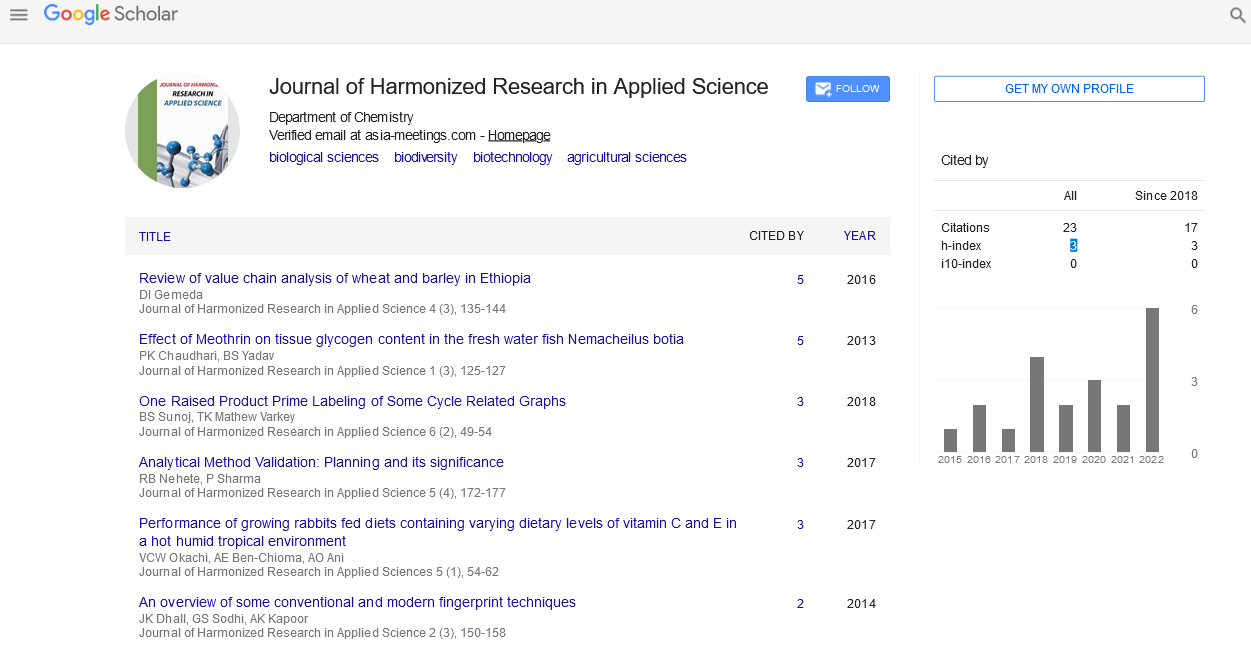Opinion Article - (2022) Volume 10, Issue 1
PLANT MUTATION BREEDING AND ITS ROLE IN CROP IMPROVEMENT
Nicola Farina*Received: Feb 25, 2022, Manuscript No. JHRAS-22-61421; Editor assigned: Feb 28, 2022, Pre QC No. JHRAS-22-61421(PQ); Reviewed: Mar 14, 2022, QC No. JHRAS-22-61421; Revised: Mar 22, 2022, Manuscript No. JHRAS-22-61421(R); Published: Mar 29, 2022, DOI: 10.30876/2321-7456.22.10.03
Description
Mutation breeding, sometimes referred to as “variation breeding”, is the process of exposing seeds to chemicals, radiation, or enzymes in order to generate mutants with desirable traits to be bred with other cultivars. Plants created using mutagenesis are sometimes called as mutagenic plants or mutagenic seeds. From 1930 to 2014 more than 3200 mutagenic plant varieties were produced, that have been derived either as direct mutants (70%) or from their progeny (30%). Crop plants account for 75% of released mutagenic species with the remaining 25% ornamentals or decorative plants. However, although the Food and Agriculture Organization reported in 2014 produced 1,000 mutant varieties of major staple crops were being grown worldwide, it is unclear that how many of these varieties are currently used in agriculture or horticulture around the world, as these seeds are not always identified or labelled as having a mutagenic provenance. Mutation breeding, in the case of self-pollinated crops that are disseminated by seed, is based on the self-fertilization or selfing of mutants until the induced desired character is stably expressed in advanced mutant generations. Often backcrossing to the original non mutated genotype (part of the DNA sequence of a cell that determines its specific characteristic) is necessary to retain its favourable characteristics.
Mutation breeding is built on mutation induction and mutation detection. This has many comparative advantages. It’s cheap, fast, proven, and robust. It is also portable, can be applied anywhere, is harmless and eco-friendly. More than 3,200 mutant varieties, including numerous crops, ornamental plants and trees, are officially approved for commercial use in more than 210 plant species in more than 70 countries. Plant biotechnology plays an important role in mutation breeding. Plant tissue culture technology is a powerful tool for reducing the time it takes to create mutant breeding lines (those that always inherit a particular trait to their offspring). This is a bottleneck for taking advantage of recessive-induced plant mutations (when genetics do not express the trait of the gene to show the more dominant one). One such plant breeding tool is double haploid technology. This refers to doubling the chromosomes from a haploid organism or cell that has only one member in each pair of chromosomes. Another way is to identify molecular markers that are closely related to the properties of interest. The development and dissemination of such molecular markers has the potential to further enhance plant mutations, especially breeding programs for staple food crops such as rice. Since domestication thousands of years ago, the high selection pressures imposed on rice breeding have narrowed its genetic diversity. Therefore, obtaining the pH of most soils in this study was in the range of 6 to 7.5. Biosolids utilization increased soil pH in the 0-4 inch depth by an average of 0.2 pH units, but did not affect pH at greater depths in the soil. Higher pH of soils that received biosolids can be attributed to two factors. One is that some farms included in this study received alkaline-stabilized biosolids, which is sewage sludge that has been mixed with lime at the treatment plant as a means of stabilizing organic matter and reducing pathogens. These biosolids have very high pH, are strongly alkaline, and are effective soil liming materials. The other reason is that regulations require soil pH to be at least 6.0 when biosolids are applied. Consequently, fields that receive biosolids may be limed more frequently than fields that are not, leading to higher soil pH. Mutations and their applications paved the way for progress in elucidating the genetic, physiological, and biochemical basis of rice traits. Therefore, the creation of variability through mutations has grown. It is one of the most important tools for improving rice. Due to the small genome size of rice, higher quality sequence designs can be released more quickly than other crops. The transition from structural genomics to functional genomics is possible for many mutagens, highlighting mutagenesis as a key player in this advancement. Successful genetic modification was achieved by randomly targeted mutations. In addition, following the mutation-inducing pathway, techniques were applied to identify mutations in the rice genome and molecular control of DNA damage repair mechanisms.










